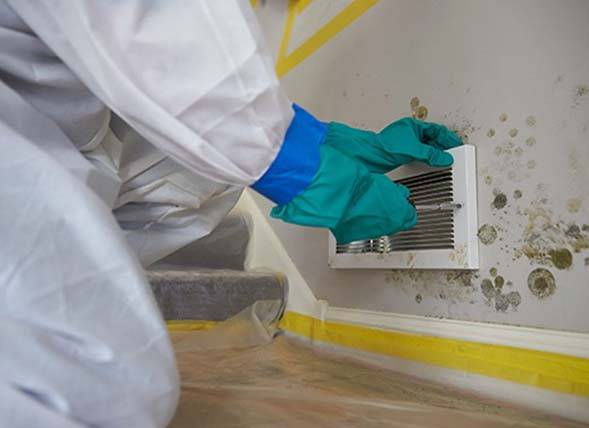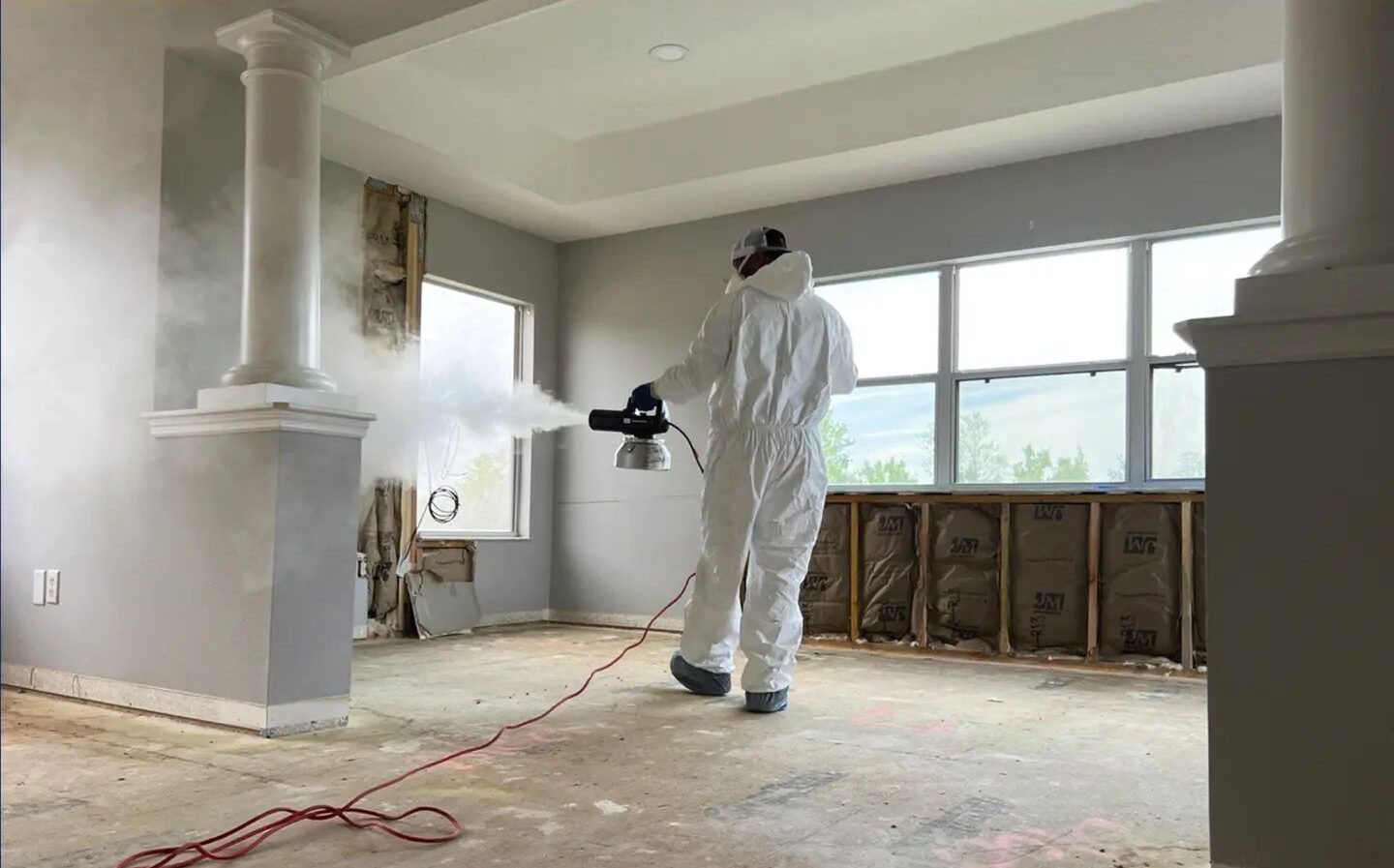Mold, a common household nuisance, can wreak havoc on your property and your health if left unchecked. From unsightly stains to respiratory issues, mold infestations demand prompt and thorough removal. As we navigate through 2024, advancements in technology and techniques continue to shape the mold removal industry, offering homeowners more effective and efficient solutions. In this comprehensive guide, we’ll explore the latest strategies, tips, and precautions for mold removal in 2024, empowering you to tackle mold problems with confidence and success.
Understanding Mold:
Mold is a type of fungus that thrives in moist and humid environments, making bathrooms, kitchens, basements, and attics prime breeding grounds. It spreads through airborne spores and can quickly colonize various surfaces, including walls, ceilings, floors, and even furniture. Common types of mold include black mold (Stachybotrys chartarum), green mold (Aspergillus), and white mold (Penicillium).

Signs of Mold Infestation:
Identifying mold in your home is crucial for early intervention and prevention of further spread. Common signs of mold infestation include musty odors, visible mold growth (often appearing as black, green, or white patches), water stains, and allergic reactions such as sneezing, coughing, and itchy eyes. If you suspect mold growth, it’s essential to address the issue promptly to mitigate health risks and property damage.
Effective Mold Removal Strategies:
In 2024, mold removal strategies have evolved to become more efficient and environmentally friendly. Here are some effective techniques for mold remediation:
- Moisture Control: Addressing underlying moisture issues is paramount for long-term mold prevention. Repair leaks, improve ventilation, and use dehumidifiers to reduce indoor humidity levels and create an inhospitable environment for mold growth.
- Containment: Before initiating mold removal, create containment barriers using plastic sheeting and tape to prevent mold spores from spreading to unaffected areas. Seal off air vents, doorways, and windows to contain the mold infestation.
- HEPA Filtration: Use High-Efficiency Particulate Air (HEPA) filtration systems to capture airborne mold spores during the removal process, preventing recontamination of cleaned areas. HEPA vacuum cleaners and air purifiers are effective tools for maintaining indoor air quality.
- Mechanical Removal: Physically remove mold-infested materials such as drywall, carpeting, and insulation to eliminate hidden mold colonies and prevent further spread. Dispose of contaminated materials properly to prevent cross-contamination.
- Chemical Treatments: Apply EPA-approved moldicides and biocides to kill mold spores and inhibit future growth on surfaces. Opt for environmentally friendly products that are safe for indoor use and pose minimal health risks.
- Dry Ice Blasting: In recent years, dry ice blasting has emerged as a preferred method for mold removal, especially in commercial and industrial settings. This non-abrasive and eco-friendly technique uses compressed air and dry ice pellets to blast away mold growth without damaging surfaces.
Safety Precautions:
Safety should always be a top priority when dealing with mold removal. Follow these safety precautions to protect yourself and others during the remediation process:
- Personal Protective Equipment (PPE): Wear appropriate PPE, including N95 respirators, goggles, gloves, and protective clothing, to minimize exposure to mold spores and hazardous chemicals.
- Ventilation: Ensure adequate ventilation during mold removal by opening windows and using fans to exhaust contaminated air outdoors. Avoid circulating air within the home to prevent cross-contamination.
- Containment: Seal off the work area with plastic sheeting and negative air pressure to prevent mold spores from escaping to other parts of the home. Use air scrubbers equipped with HEPA filters to capture airborne contaminants.
- Disposal: Dispose of mold-infested materials in sealed plastic bags and transport them to designated landfill sites or recycling centers. Avoid contaminating clean areas of the home during disposal.
- Professional Assistance: For extensive mold infestations or if you have underlying health conditions, consider hiring certified mold remediation professionals who have the expertise and equipment to safely and effectively remove mold from your home.
Post-Remediation Verification:
After completing mold removal, conduct thorough post-remediation verification to ensure that the affected areas are clean and free of mold contamination. Perform visual inspections, air sampling, and surface testing to confirm that mold levels have been reduced to acceptable levels. Seek assistance from certified indoor environmental professionals for comprehensive mold assessment and clearance testing.
Preventing Future Mold Growth:
To prevent mold from returning, implement preventive measures to maintain a dry and healthy indoor environment:
- Regular Inspection: Conduct regular inspections of your home for signs of moisture intrusion, leaks, and humidity issues. Address any water damage or plumbing leaks promptly to prevent mold growth.
- Proper Ventilation: Ensure proper ventilation in bathrooms, kitchens, and other high-moisture areas by using exhaust fans, opening windows, and installing vented appliances.
- Humidity Control: Maintain indoor humidity levels between 30% and 50% to discourage mold growth. Use dehumidifiers in damp areas and monitor humidity levels with hygrometers.
- Prompt Cleanup: Clean up spills, leaks, and water damage immediately to prevent mold growth. Thoroughly dry affected areas within 24 to 48 hours to prevent mold colonization.
- Regular Cleaning: Regularly clean and disinfect surfaces prone to mold growth, such as bathrooms, kitchens, and basements. Use mold-resistant paint and sealants to protect vulnerable surfaces from mold infestation.
Conclusion:
In conclusion, mold removal in 2024 encompasses advanced techniques, safety protocols, and preventive measures to address mold infestations effectively and protect indoor air quality. By understanding the signs of mold infestation, implementing proper remediation strategies, and prioritizing safety precautions, homeowners can successfully combat mold growth and create a healthy living environment. Remember to stay informed about the latest developments in mold remediation and consult with certified professionals for comprehensive mold assessment and removal services. With proactive measures and diligent maintenance, you can keep mold at bay and enjoy a mold-free home for years to come.

